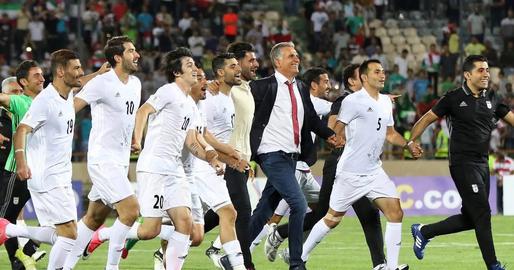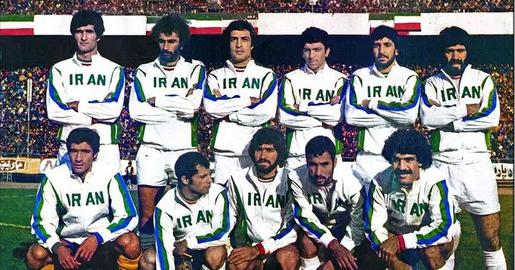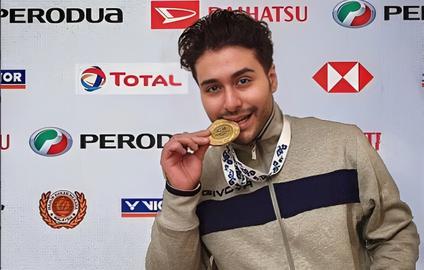This article is part of a 22-part miniseries on the history and stars of Iranian football released ahead of Iran's participation in Group B of the 2022 Qatar World Cup in November. You can explore the rest of the series here.
The 1970s were a glorious decade for Iranian football: three participations in the Olympics, three consecutive championships in the Asian Cup, and when Iran qualified for the World Cup in 1978, it was the only country in the Asia-Pacific to do so. None of these feats has been pulled off by Iran since then. Here are some of the football stars that made it happen.
Parviz Ghelichkhani
Born on November 29, 1945 in Tehran, with 66 national games and 14 goals to his name, Ghelichkhani had the second-highest number of appearances on the pitch in the history of the national team before 1979. Some consider him the best player the domestic game has ever seen.
Over the course of his 13-year career on the national team, Ghelichkhani played in all positions except goalkeeper. He was the best defendsive midfielder in his cohort by some way, but was also known as the most ruthless forward on the offensive. In the center of the pitch he could be relied on to intercept a ball and turn the game; on the sidelines he infuriated the opposition with sheer speed and technique.
Ghelichkhani’s most important and decisive goal was in the final against Israel in the 1986 Asian Cup. Israel had scored in the first half but Hossein Kalani managed to bring the two teams neck and neck in the second. Then a powerful shot by Ghelichkhani from the middle of the field, which passed by several opposing players, won Iran the Asian championship for the first time. He also captained the team during its wins in 1972 and 1976, and at the Summer Olympics those same two years.
Before the Islamic Revolution, Ghelichkhani was arrested and interrogated by Iran’s then-National Intelligence and Security Organization (SAVAK) due to his political learnings. After the revolution, he fled the country and never played football again. He now lives in France and edits a political magazine.
Nasser Hejazi
Nasser Hejazi was recognized as the second-best goalkeeper in Asia in the 20th century by the Asian Football Confederation. Born on December 14, 1949 in Tehran, he started playing football in Tehran's Nader team and joined Taj (now Esteghlal) FC the age of 20.
His 12 years’ experience there saw him quickly selected for the national team. He was goalkeeper during the 1972 Asian Cup, the 1974 Asian Games, and the 1978 World Cup, as well as the 1967 Montreal Olympics and the 1980 Nations Cup.
Hejazi was a popular figure in his own right, and refused to kowtow to the Islamic Republic, famously resisting a photo alongside the picture of Ayatollah Khomeini. His last match in post was in 1980 against Kuwait, after which he was pushed out by a strange law that barred players aged over 29 from competing at the international level.
After spending much of the 1980s coaching Esteghlal, political pressure forced Hejazi’s exit from Iran in 1988. He ended his football career with Bangladesh's Mohammedan Sporting Club and died from cancer on May 23, 2011.
Ali Parvin
Ali Parvin, born on September 25, 1946, holds the record for the highest number of marches played with Iran before the revolution, and is an icon of Persepolis FC. He began his footballing career in 1965, joining Peykan in 1968 and Persepolis in 1970. He remained with the club until the end of his career on the pitch 18 years later.
Parvin was first invited to join the national team in 1970, and remained there until 1981 as a right winger and attacking midfielder. His most important goal was scored in the final of the Asian Cup in 1976, which won Iran the first-place trophy. He also took Iran as captain to the 1978 World Cup in Argentina, as well as two rounds of the Summer Olympics.
After the revolution Parvin announced he had quit football, but returned shortly afterward. Under his leadership, the national team also enjoyed a resounding victory at the 1990 Asian Games in Beijing.
Hasan Roshan
Hassan Roshan was born on June 2, 1955 and is one of just two players to have scored a goal for Team Melli before the revolution, and the only one to have scored in the World Cup, Asian Cup, Summer Olympics and Asian Games.
In the 1978 World Cup, Roshan scored Iran’s single goal against Peru, though the team still eventually lost 4-1. Two years earlier at the Olympics, he had opened up the goal held by Poland’s famous Ian Tomajevsky and scored. Although, again, Iran lost the match, his was remembered as one of the most beautiful goals of the tournament.
He was a member of the national team from 1974 to 1980, but was removed after the revolution. In total, he wore the Team Melli shirt 48 times, scoring 13 goals.
visit the accountability section
In this section of Iran Wire, you can contact the officials and launch your campaign for various problems

























comments